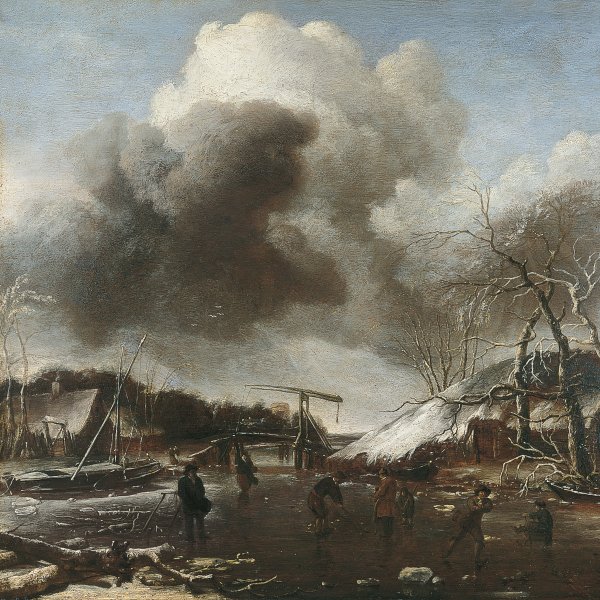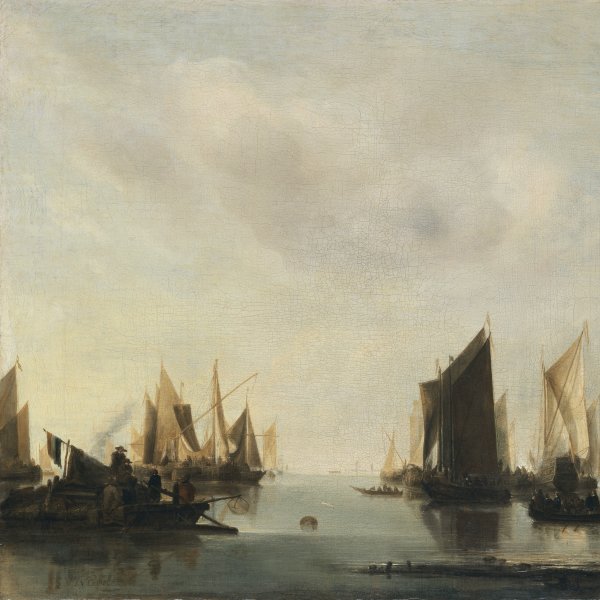Jan van de Cappelle
Amsterdam, 1626-1679
Jan van de Cappelle was baptised in 1626 in Amsterdam where he lived until his death. He was a self-taught artist and despite being considered one of the most important 17th-century Dutch marine painters, he never dedicated himself professionally to painting nor was he a member of the guild of Saint Luke. Together with his brother Louis, Van der Cappelle owned a prosperous dying workshop that they had inherited from their father and his comfortable economic situation allowed him to devote himself to painting as a hobby. Van der Cappelle’s will reveals that in addition to the family business he owned numerous properties and a large art collection of more than 200 paintings and 7, 000 prints, considered one of the most important of its day. His other great passion was boats and sailing and he owned a sailing boat that he took out along the Dutch coastline and rivers, during which excursions he made sketches and drawings. Van der Cappelle was associated with an extensive circle of artists, scholars and poets and his portrait was painted by Rembrandt, Frans Hals and Gerbrand van den Eeckhout. His oeuvre largely consists of marine views but he also painted beaches and winter landscapes. His marine views reveal the influence of Simon de Vlieger the Elder, with whom he shared a passion for sailing. Most of Van der Cappelle’s works depict river estuaries and tranquil inland harbours in which large vessels and smaller sailing boats are grouped together. Van der Cappelle introduced a new type of composition within this genre, namely that of maritime “parades” in which boats and ships at anchor are depicted during an official event. In such works we see sailing ships arranged in orderly lines and peopled with elegantly dressed dignitaries and nobles. The ships fire their cannons and fly their ensigns with their sails unfurled. Van der Cappelle’s output decreased notably in the 1660s and his last known paintings date from 1663, fourteen years prior to his death. The artist’s work had a significant influence on marine painters of his generation, particularly over Hendrick Dubbels and Willem van der Velde II, while his winter scenes were imitated and copied by Jan van Kessel.





